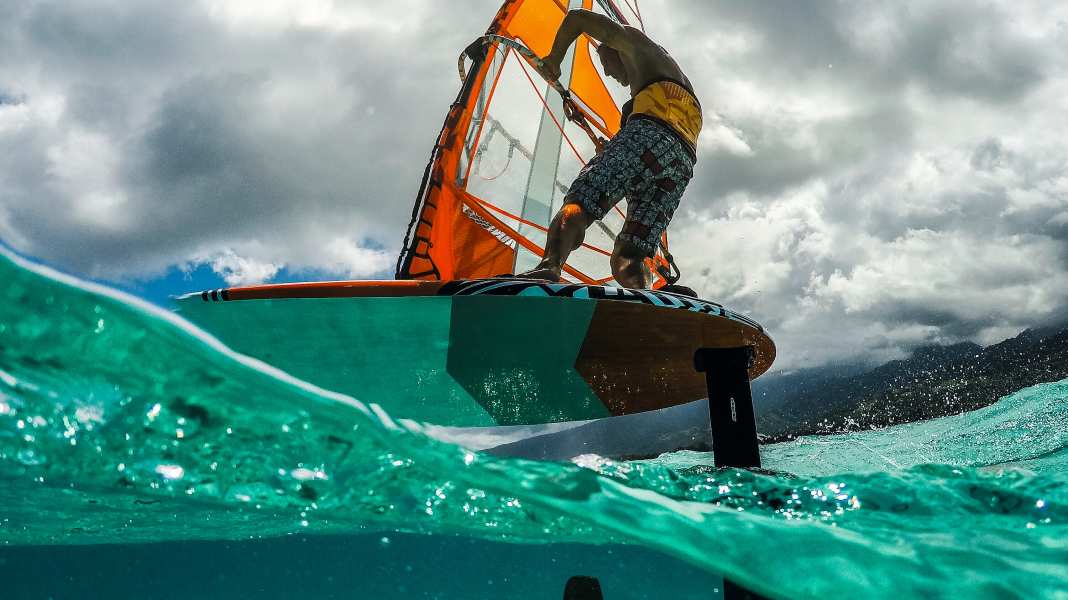
I currently spend around 40 per cent of my working time on foil design," says Robert Stroj, whose initials are emblazoned on almost every NeilPryde sail to date. However, a foil in the water follows the same laws as a sail in the wind. Because water is so much denser than air, even much smaller profiles generate enormous forces, which is the main difference. And the expectations and hopes in foil surfing are so high that even a renowned sailmaker can be lured from profiling sails to grinding profiles.
Foils are slower
"There is a lot of discussion that higher speeds are possible with a hydrofoil - but this assumption is wrong," says Dipl.-Ing. Dietrich Hanke from Maui Ultra Fins, putting all speed record dreamers back on the beach with the seat harness. The graphics of the former DLR research specialist show how the resistance of a foil increases dramatically with increasing speed, much more so than with a fin.
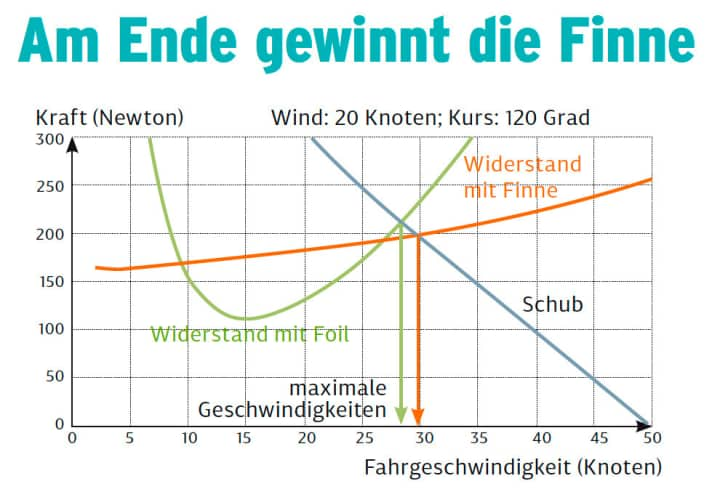
The reason probably lies in the overall "Foil" system, where quite a few components are dragged along to make the device rideable at all, but which also generate a lot of resistance. Like the rear wing. "We would be happy if we didn't need the back wing on the Foil, because it creates negative lift and a lot of drag," complains Robert Stroj, "but it is an important stability feature."
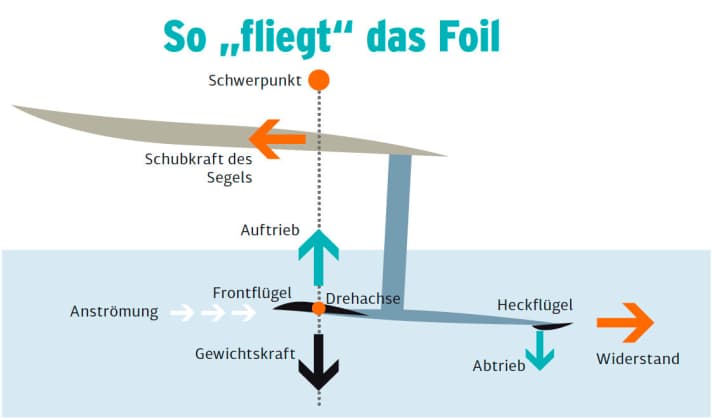
Because "the back wing provides damping," explains Hanke, "the larger the back wing, or the longer the fuselage (editor's note: the side member to which the two wings are attached), the stronger the damping." If the board tilts downwards unintentionally while surfing, the downforce on the back wing automatically increases, which steers the tip of the board upwards again. A foil without damping would be like a car with springs but without shock absorbers - with uncontrollable kangaroo behaviour in both cases. "Short fuselages need larger back wings in order to generate the same stability as long fuselages," says Robert Stroj, who also knows this from practical experience. Those who are fond of loops are probably already planning the long fuselage with a mini-wing at the rear, which keeps the system in balance but has little resistance. "But it's still a design compromise," says Robert, immediately weighing this up, "because the longer the fuselage, the more resistance it creates. So in practice, we have to find a balance between the length of the fuselage and the size of the back wing."
Anyone who has ever been outflanked by a foiler in twelve knots of wind is probably asking themselves, "How does that fit in with the theory of the slower foil surfer?" In fact, the high resistance of the foil monster in the water only comes into play at higher speeds. In the lower planing wind range, the advantages of the foil outweigh the disadvantages. While in windsurfing with a fin, the planing surface provides the necessary buoyancy to keep the board, rig and rider gliding freely over the water and also offers a lot of resistance, with a foil the wing takes over the tasks of the fin and board together immediately after take-off - and does so much more efficiently. On the one hand, a fairly flat board is used, which only half flies in the lower planing area, but half still "sticks" to the water and pushes against smaller waves. On the other side is a precisely calculated profile that glides through perfectly calm water at a depth of 30 centimetres and ignores every choppy wave 50 centimetres above the water.
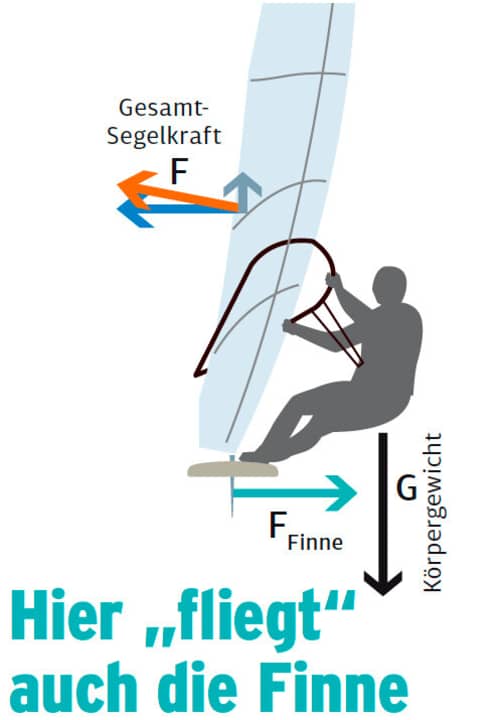
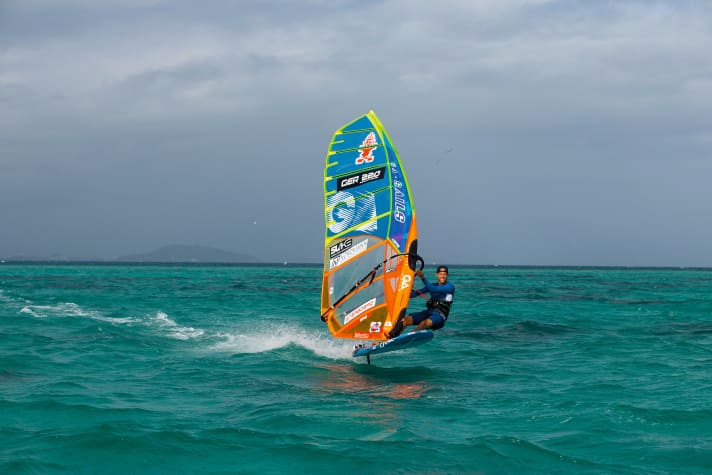
In light winds: Foils are in front
The asymmetrical profile of foil wings, as opposed to the symmetrical profile of fins - we have to surf in both directions - also contributes to the positive balance in light wind foiling. When it only goes in one direction, world record hunter Antoine Albeau also relies on more efficient asymmetrical fins, where "the speeders have an advantage of one and a half to two knots", as fin builder Otmar Schleenvoigt knows. However, NeilPryde designer Robert Stroj still sees the foil advantage in a limited wind window or on special courses: "As soon as you are travelling well with a 9.0 slalom sail, you are still faster on typical slalom courses, i.e. perhaps 15 degrees downwind, even today. But it's a different story on a half-wind course and as soon as you go upwind, the foil is clearly superior."
Fin and foil profiles
The cross-sections of the profiles on which foilers fly are based on the same data as most fins: Countless American "NACA" airfoils were developed from 1915 to 1958 for a wide variety of flow situations; later, the German aerodynamicist Richard Eppler laid the foundation for the refined design, originally for glider airfoils, but which are still used today for fins and foils due to their transferability. "The profiles that I make are at least very close to a NACA profile," says Schleenvoigt, who builds the slalom and formula fins that are coveted among racers with Hurricane Fins, "I don't start from them, but I would always find one among the NACA profiles that comes very close to my profiles."
Fin designers and foil developers follow the same path when making their selection: for low speeds and uncomplicated riding characteristics, profiles are thicker and the leading edge is as round as possible. This means that fins are less prone to spin outs - the sudden smearing to the side - and foils remain more stable at the top even at low speeds and in tight turns. "This is because the current breaks off later on round leading edges," explains Otmar. "The fin normally receives a flow at an angle of between three and five degrees; if the leading edge is sharp, a stall vortex occurs at even higher angles of attack. The angle of attack depends on the lift you need at the time, i.e. also on the course, whether upwind or downwind. With a fin, it becomes critical if you try to ride a high angle of attack in light winds: If you're still in the planing range and give too much pressure with a thin fin, you'll kick it away. However, if the same fin is fast, then it will grip safely because it has a smaller angle of attack at higher speeds - for the same lift that you need. On the other hand, you can ride a fin with a very round edge slowly with a large angle of attack without anything happening." However, thick leading edges also prevent absolute top performance. But making a fin pointed and thin just to surf faster is not the perfect recipe for speed either.
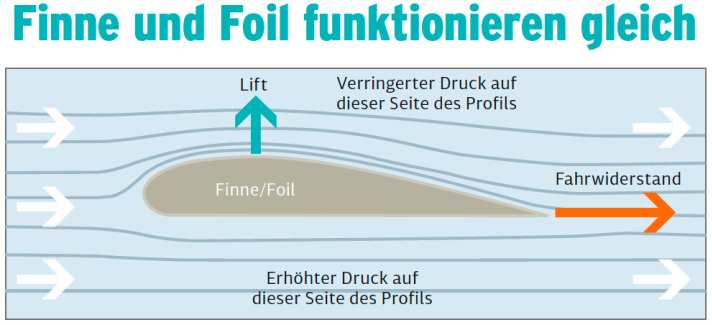
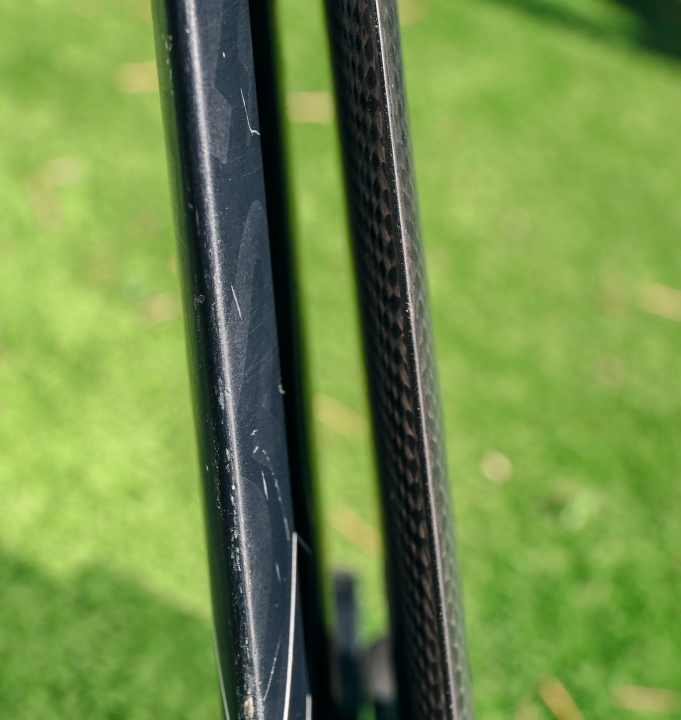
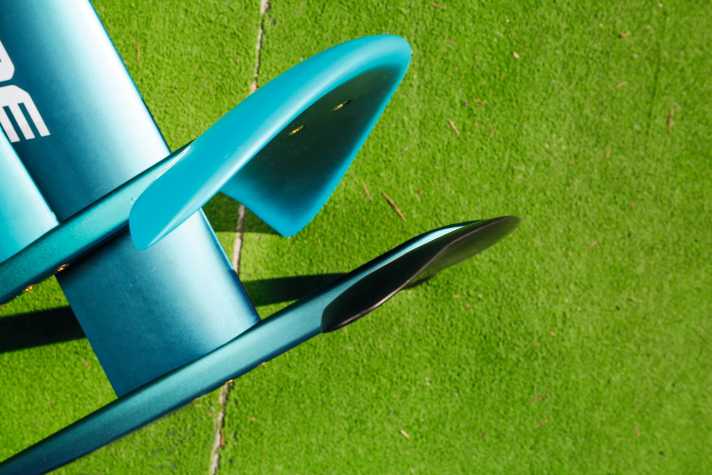
The fastest fin
"There is no such thing as the 'fastest fin'," says fin guru Otmar Schleenvoigt, dampening euphoric hopes. "You always have to look at the fin in combination with the board, rig and rider. If everything fits together, the fin is fast. There are fins with more power, some with a slightly thicker profile, some with more surface area, others with less power. Everyone has to find 'their' fin. Riding styles are different, so everyone has their favourite fin. A fin has less lift if it is thinner. It lifts the board out less, which means that a thinner fin doesn't necessarily have to be faster. A larger and thicker fin can be faster because the board runs more freely or flies more, which means you have less wetted surface area on the board and are therefore faster. Many people believe that very thin fin profiles are always the fastest, but that's not the case."
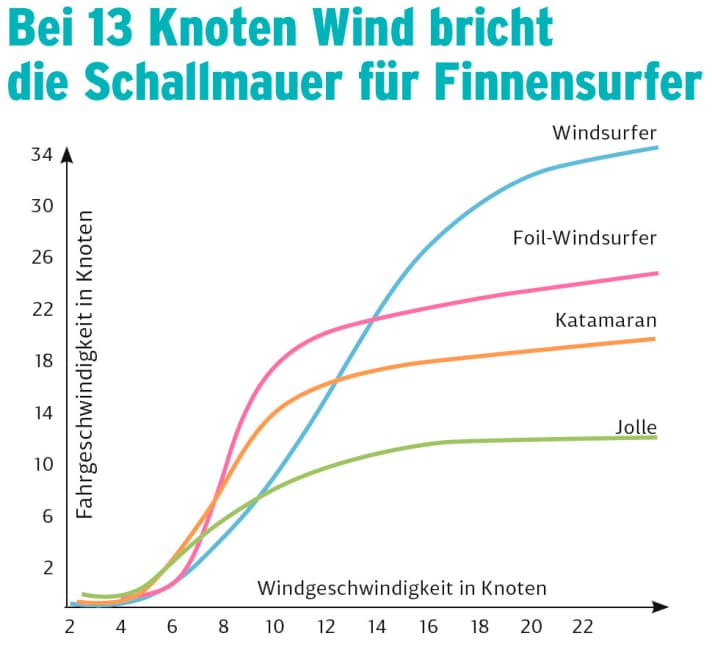
Foil masts - preferably mega-stiff
Robert Stroj also designed the wing profile of the particularly easy-to-ride "Glide Windsurf" to be round and thick. "As with foils for surfing, a perfectly round leading edge is important because there is a wide range of angles of attack. You need to work at a large angle in light winds and still be able to go relatively fast. A sharp leading edge and thin profiles, on the other hand, work in a narrow window of angles of attack, but if you lean out of this window too far, you will stall.
However, there are more criteria for fast foiling than just a thin profile. "Stiffness is 100 per cent related to control and therefore speed when foiling," Stroj lists, "the mast is the most important thing, then the fuselage, and finally the wings. Because only good torsional rigidity of the mast keeps the foil stable on track." While a rock-hard fin is not desirable for windsurfing: "I don't think full carbon fins make sense," says fin expert Schleenvoigt, "they are more difficult to handle. A tiny, asymmetric speed fin can be very stiff, but if I make a 70 cm long formula fin stiff, then nothing works."
Which leads to the next optimisation task for the foil. "A thin, slender 60-centimetre mast with maximum stiffness would be ideal," says Robert. You would then fly stably and with little resistance in the water. In practice, however, there are choppy waves to overcome, which can only be overcome quickly and without contact with long masts - each touchdown costs half a metre to a metre, say racers. "Between 90 and 110 centimetres are standard in high-end racing," reveals the Foill designer, "but unfortunately it's amazing how much softness comes into the system if you make the mast ten centimetres longer.
The resistance of boards with a fin increases almost linearly with speed (orange). With a foil, on the other hand, the drag first decreases after take-off (at seven to eight knots of speed) (green) and becomes significantly smaller than with planing surfing. However, the drag then increases all the more due to the large foil area. The sail thrust decreases with increasing speed. When thrust and drag are equal, the maximum speed has been reached; higher speeds are theoretically and practically unattainable." The important torsional stiffness in particular does not decrease proportionally with increasing length, but rather by the square. Based on practical experience from surf tests, aluminium masts are often significantly stiffer than carbon masts. "Yes, that's true," confirms Stroj, "but that's also because the aluminium profiles are usually much thicker and wider - carbon can be kept slimmer and is therefore faster." Let's see how long 40 per cent labour input will last in this area. The surf test is still mainly dedicated to surfing with a fin, but a detailed comparison of the most important entry-level freeride foils will be published in the magazine in spring.
This article first appeared in surf 11-12/2018

